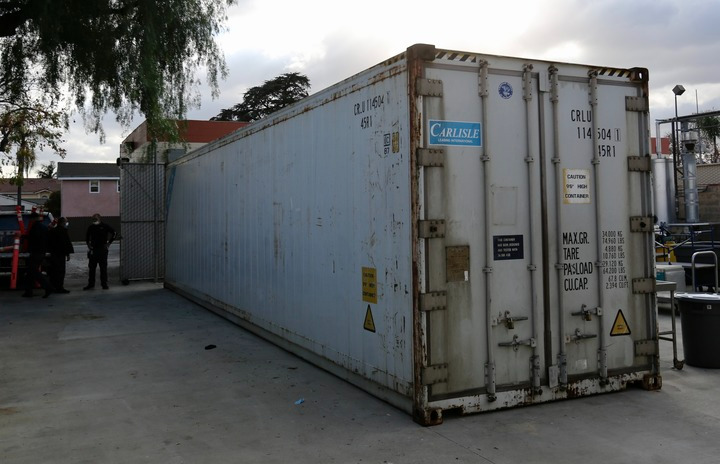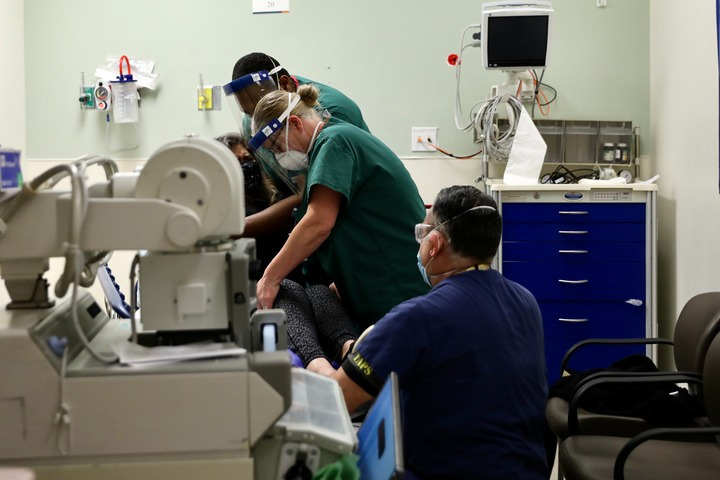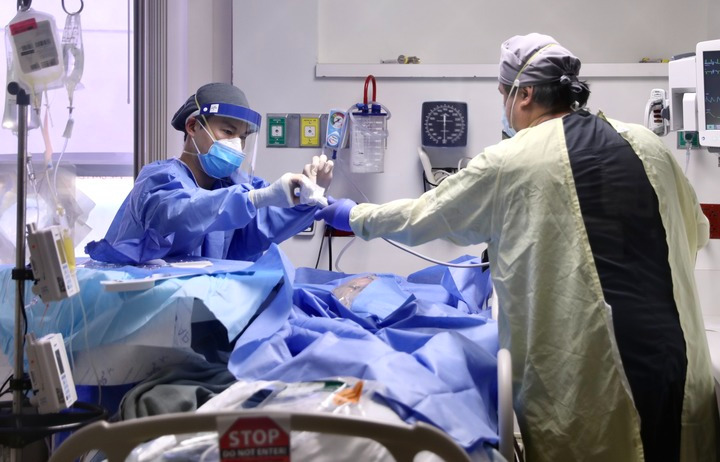According to the California Department of Health, the vacancy rate of intensive care units in the Southern California regional hospital where Beverly Hospital is located has been zero recently.
Just like Chen Sujuan’s feeling, the locality is a mirror reflecting the seriousness of the epidemic in the United States. The number of cases has hovered at a high level for a long time.
The “peak” of the epidemic has “squashed” local medical resources again and again, and medical staff have almost always been in a state of overdraft.
In contrast, the progress of COVID-19 vaccination is too slow, which makes it difficult to end the above-mentioned overload for a while.
According to the latest statistics of Johns Hopkins University on January 24, the cumulative number of confirmed cases in the United States exceeds 25 million, and the cumulative number of deaths is approaching 420,000, all of which are the largest in the world.
Among them, California has a population of 40 million, which is the most populous state in the United States.
Last week, it became the first state in the United States to have more than 3 million confirmed cases.
The latest data shows that it has added about 24,000 cases in a single day, with a total of more than 3.1 million cases. The cumulative death is currently close to 37,000.
According to the coronavirus data released by the California Department of Health on January 22, California has 764 new deaths in a single day, a new high in the region.
This is equivalent to one person dying of the coronavirus every two minutes.
According to data provided by Beverly Hospital, 77 of the 130 inpatients were COVID-19 patients on the day of the reporter’s visit.
There are only six morgues in the hospital morgue, but at most 56 bodies need to be frozen.
Hospitals are forced to rent frozen containers to mortize.

According to the hospital personnel, in the early days of the outbreak of the epidemic in the United States last March, the biggest difficulty of hospitals was the serious shortage of protective equipment, but now the biggest difficulty is the shortage of medical staff.
Chen Sujuan said that in July and August last year, the epidemic in California eased, and many people relaxed.
As a result, the autumn and winter overlapped the holiday season, and California fell into a surge in cases.
She called on Californians, especially young people, to abide by epidemic prevention regulations, so as to reduce the burden on medical staff.
She also lamented that there were many Chinese medical staff in the hospital, and the medical staff in the intensive care room were basically Chinese.
They do not shrink back in the face of the epidemic, work together, have no complaints and no regrets, reflecting the cultural heritage of the Chinese.
Chen Sujuan also pointed out that the epidemic has exposed a serious shortage of U.S. government reserves.
After this epidemic, everyone has learned a lesson that we must always maintain a sense of crisis.
Especially when the vaccine supply is insufficient and vaccination is not universal enough, medical staff must always remain “war ready”.

California’s coronavirus data has always been at the forefront of the United States. This is also a state with more Chinese people.
Since the outbreak of the novel coronavirus in the United States in March last year, in addition to the medical staff who have to stick to the front line, more and more people around the reporter intuitively feel that the epidemic is approaching everyone’s life step by step from distant data:
The company where someone works has 21 employees, 8 of whom have tested positive for nucleic acid;
Some people were worried that after the child was “caught”, he had to be quarantined in the college dormitory for two weeks and rely on the young man to “carry it”;
Someone received mass emails from the child’s school informing the bad news that parents of students have died of the novel coronavirus in the school district, reminding everyone to pay attention to prevention;
A 10-year-old girl in the community was rescued in the intensive care room for many days because of the novel coronavirus.
She only recovered and was discharged from the hospital two days ago. The former playmates sent toys together to comfort this peer who had experienced the game of life and death too early.
… Similar examples are really numerous.
Why did the epidemic in the United States develop to this extent? How long will it take to see the “light”? This is probably a question of many Californians.



